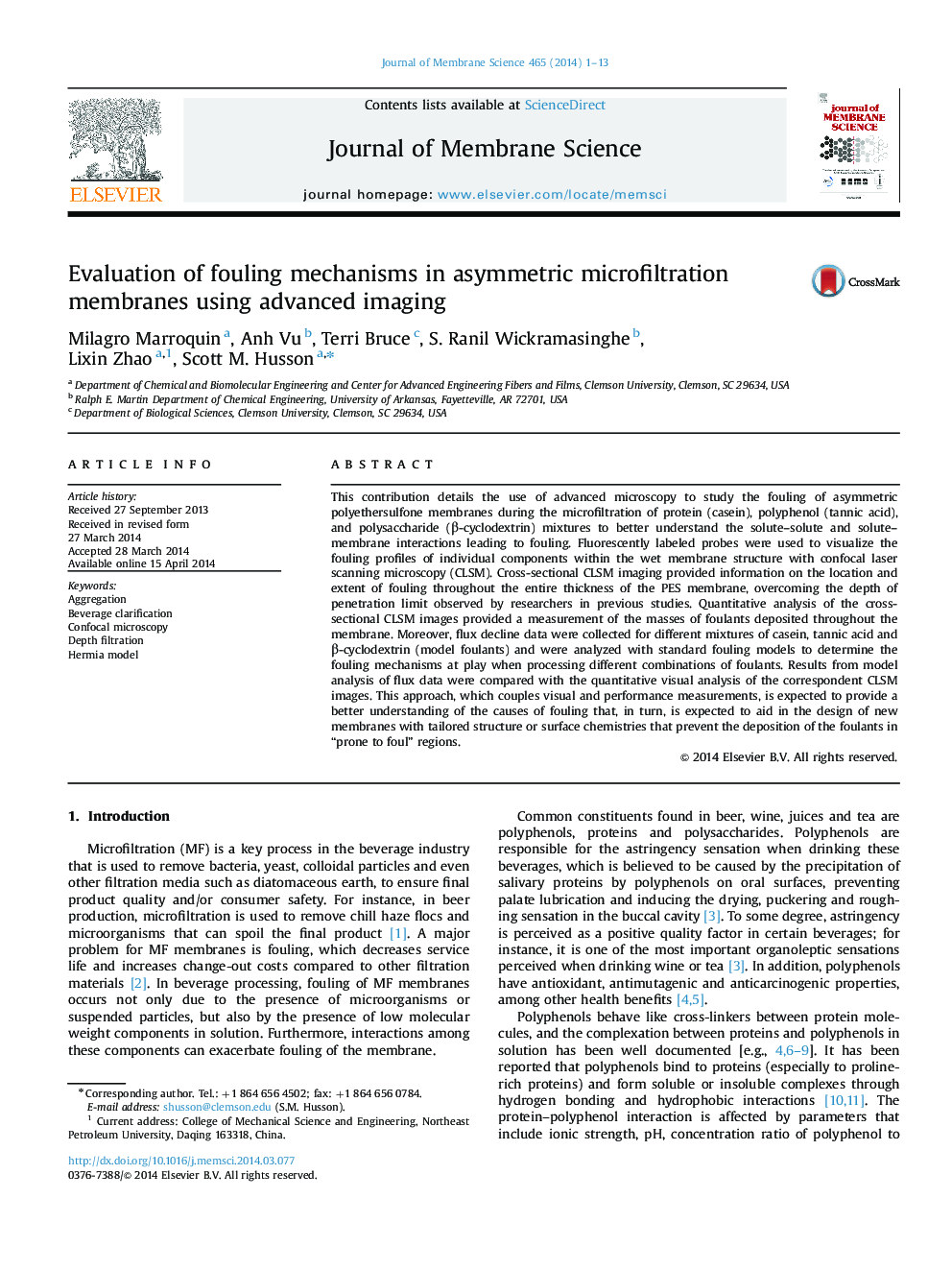| Article ID | Journal | Published Year | Pages | File Type |
|---|---|---|---|---|
| 633568 | Journal of Membrane Science | 2014 | 13 Pages |
Abstract
This contribution details the use of advanced microscopy to study the fouling of asymmetric polyethersulfone membranes during the microfiltration of protein (casein), polyphenol (tannic acid), and polysaccharide (β-cyclodextrin) mixtures to better understand the solute-solute and solute-membrane interactions leading to fouling. Fluorescently labeled probes were used to visualize the fouling profiles of individual components within the wet membrane structure with confocal laser scanning microscopy (CLSM). Cross-sectional CLSM imaging provided information on the location and extent of fouling throughout the entire thickness of the PES membrane, overcoming the depth of penetration limit observed by researchers in previous studies. Quantitative analysis of the cross-sectional CLSM images provided a measurement of the masses of foulants deposited throughout the membrane. Moreover, flux decline data were collected for different mixtures of casein, tannic acid and β-cyclodextrin (model foulants) and were analyzed with standard fouling models to determine the fouling mechanisms at play when processing different combinations of foulants. Results from model analysis of flux data were compared with the quantitative visual analysis of the correspondent CLSM images. This approach, which couples visual and performance measurements, is expected to provide a better understanding of the causes of fouling that, in turn, is expected to aid in the design of new membranes with tailored structure or surface chemistries that prevent the deposition of the foulants in “prone to foul” regions.
Related Topics
Physical Sciences and Engineering
Chemical Engineering
Filtration and Separation
Authors
Milagro Marroquin, Anh Vu, Terri Bruce, S. Ranil Wickramasinghe, Lixin Zhao, Scott M. Husson,
